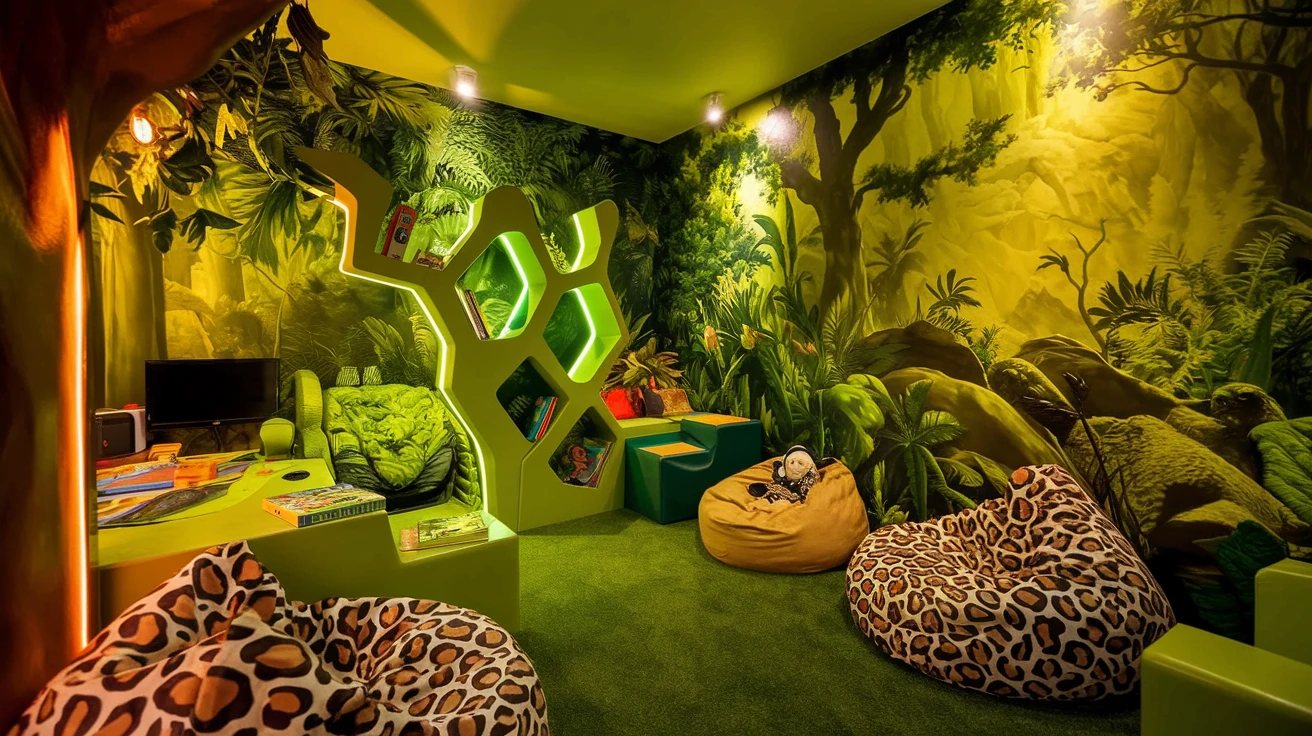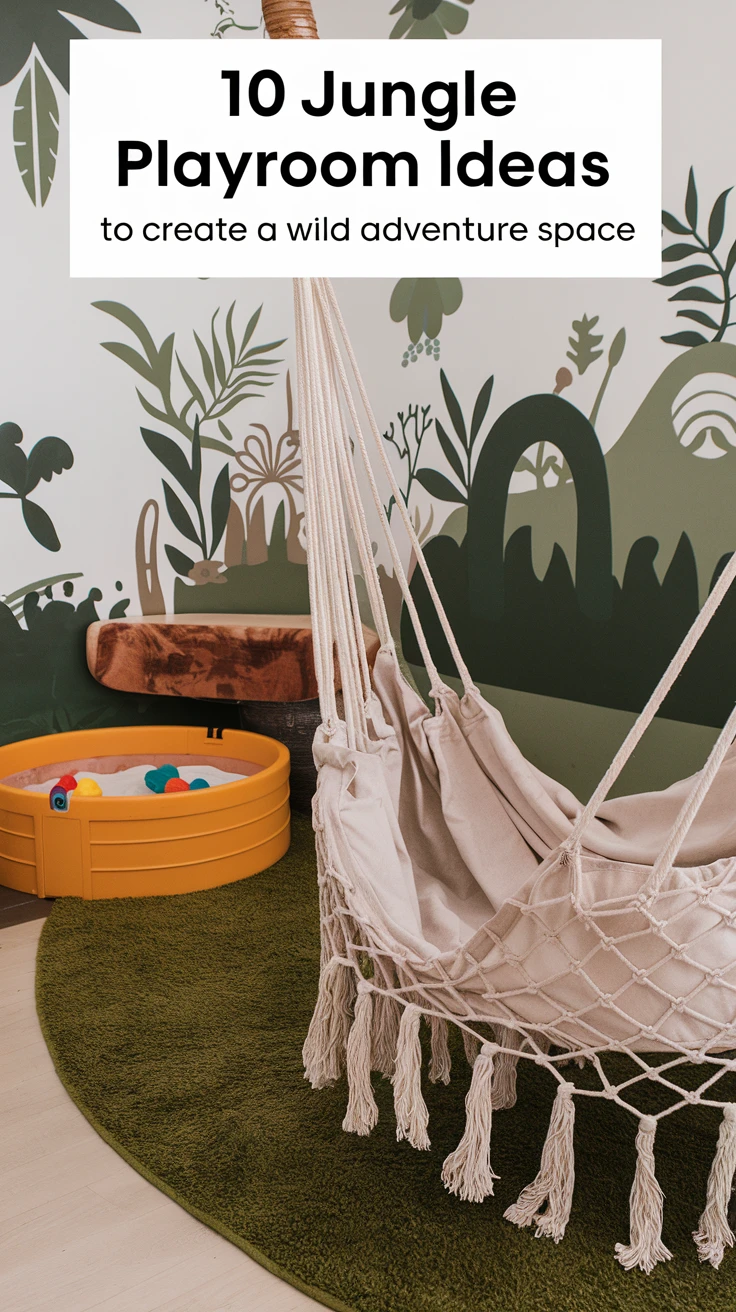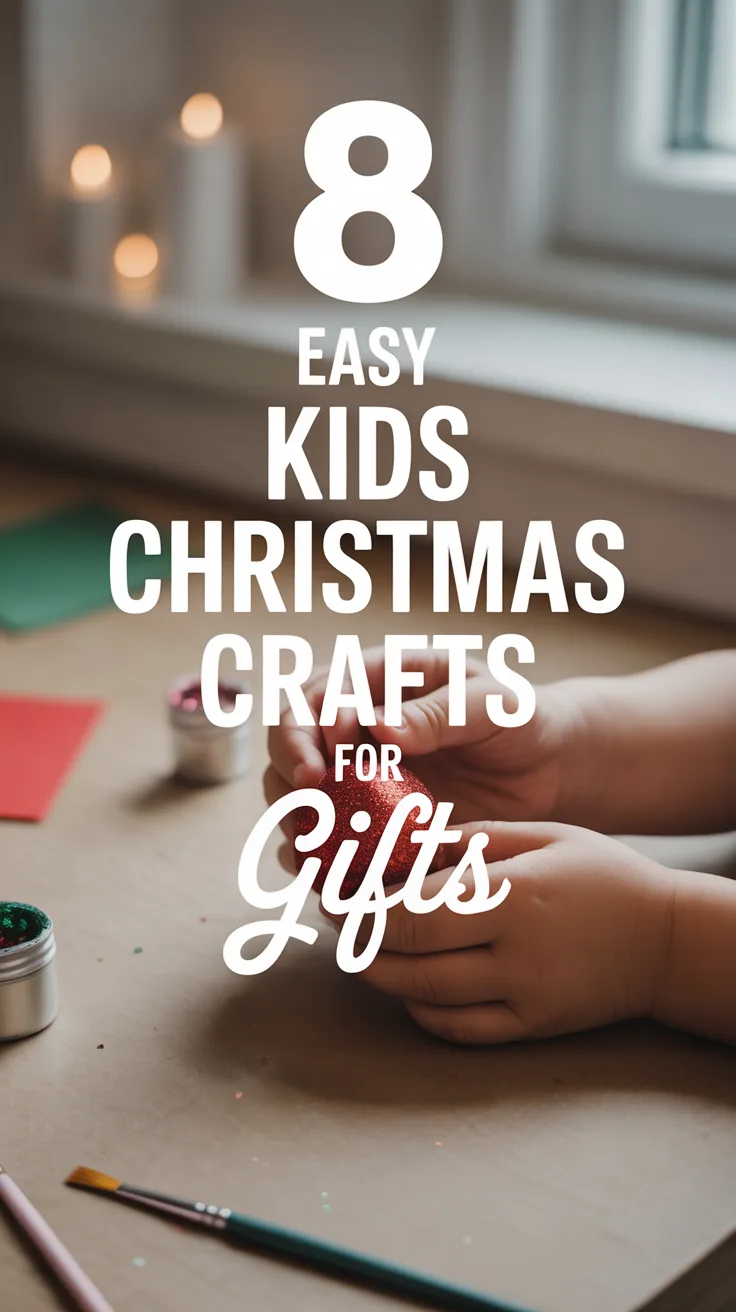
Introduction: Unleashing Wild Imagination
Creating a jungle playroom can transform an ordinary space into an exhilarating adventure zone for children. Imagine the excitement on a child’s face as they step into a room that feels like a mini rainforest, complete with vibrant colors, intriguing textures, and playful elements. I recall setting up a jungle-themed corner in my home, the joy in my niece’s eyes was indescribable. The best part? It wasn’t just about aesthetics; it was a space that encouraged learning, creativity, and endless fun.
1. Choosing the Right Color Palette
Setting the Mood with Colors
The first step in crafting a jungle-themed playroom is selecting the right color palette. Think lush greens, earthy browns, and pops of vibrant colors like red and yellow. These hues mimic the natural environment of a jungle and create an inviting atmosphere. I remember experimenting with different shades of green on one wall, and it made a world of difference!
- Use different shades of green for walls or accents.
- Incorporate earthy tones like brown and beige.
- Add vibrant colors in accessories or furniture.
2. Incorporating Jungle-Themed Wall Art
Bring the Jungle to Life
Wall art is a fabulous way to bring the jungle indoors. From murals depicting dense forests to decals of exotic animals, the possibilities are endless. I once painted a mural with a friend, and though it took hours, the outcome was magical.
- Consider a mural of a jungle scene.
- Use removable wall decals for flexibility.
- Incorporate framed prints of jungle animals.
3. Furniture and Decor Selection
Functional yet Fun
Furniture in a jungle playroom should be both functional and fun. Opt for pieces that double as play equipment or storage solutions. One of my greatest triumphs was finding a tree-shaped bookshelf that became the centerpiece of the room!
| Furniture Type | Jungle Theme Ideas |
|---|---|
| Seating | Bean bags in animal prints |
| Storage | Tree-shaped bookshelves |
| Tables | Leaf-shaped activity tables |
4. Textures and Fabrics
Adding Depth with Texture
The right textures can add depth and coziness to a playroom. Think soft rugs that mimic grass, or curtains with a leafy design. I once found a rug that felt so much like real grass, the kids insisted on lying on it for hours on end!
- Use plush rugs that resemble grass.
- Choose curtains with foliage patterns.
- Incorporate textured cushions and throws.
5. Lighting for Ambiance
Setting the Scene with Light
Lighting can dramatically affect the mood of a room. Soft, warm lighting can create a cozy jungle feel, while brighter lights can make the space lively. A friend once gifted me a lamp shaped like a monkey; it became a hit with the kids!
- Use string lights for a magical feel.
- Choose animal-shaped lamps for fun.
- Consider dimmable lights for flexibility.
6. Adding Elements of Adventure
Fueling the Imagination
Incorporate elements that spark adventure. Think about climbing ropes, swings, or a small tent for hideouts. My little explorers loved the sensory swing I installed; it was a game-changer!
- Install a climbing wall or ropes.
- Add a hammock or swing chair.
- Include a tent or teepee for play.
7. Interactive Learning Spaces
Learning Through Play
Blend play with education by integrating interactive learning spaces. Chalkboards, whiteboards, or themed puzzles can be engaging. When I first introduced a giant puzzle map of the world, it became a favorite activity.
- Incorporate a chalkboard wall for creativity.
- Use puzzles and games related to jungle themes.
- Include books about nature and wildlife.
8. Sensory Play Areas
Engaging the Senses
Sensory play is essential for development. Create zones with different sensory materials like sand, water, or tactile toys. The day we installed a mini sandpit, the kids were ecstatic, and playtime extended into hours of imaginative play.
- Set up a small sand or water table.
- Include tactile toys like sensory balls.
- Use kinetic sand for creative play.
9. Incorporating Technology Wisely
Balancing Tech and Play
Technology can enhance the playroom experience if used wisely. Interactive screens or projectors can bring a jungle to life. I witnessed firsthand how a simple projector transformed our room into a vibrant rainforest at the touch of a button.
- Use projectors for dynamic jungle scenes.
- Incorporate interactive tablets for learning.
- Consider smart speakers for jungle sounds.
10. Personal Touches
Making It Unique
Add personal touches to make the space uniquely yours. Include family photos from zoo trips or display your child’s jungle-themed artwork. I found that including my niece’s drawings made her feel like a co-creator of her play space.
- Display family photos with jungle backgrounds.
- Hang your child’s artwork on the walls.
- Include personalized name signs or decals.
Conclusion: A Jungle of Fun and Learning
Creating a jungle playroom is more than just decorating a space; it’s about crafting an environment that inspires exploration, creativity, and learning. Whether you’re painting a mural together or assembling a jungle puzzle, each element you add enriches the experience. Remember, the ultimate goal is to create a haven where children can let their imaginations run wild, just like in the heart of a real jungle.
Key Takeaways
- Choose a color palette that reflects the vibrant and earthy tones of a jungle.
- Incorporate wall art and murals to bring the jungle theme to life.
- Select furniture that is both functional and fun, like tree-shaped bookshelves.
- Use textures and fabrics that add depth and coziness to the space.
- Lighting plays a crucial role in setting the ambiance of the playroom.
- Add elements of adventure, such as climbing ropes or hammock chairs.
- Blend play with learning through interactive and educational elements.
- Create sensory play areas to engage children’s senses and imagination.
- Integrate technology thoughtfully to enhance the play experience.
- Add personal touches to make the playroom uniquely special.
Frequently Asked Questions
- What colors are best for a jungle playroom? Opt for greens, browns, and pops of vibrant colors like red and yellow.
- How can I create a jungle mural? Use stencils or hire a mural artist for a professional touch.
- What furniture is ideal for a jungle-themed room? Look for tree-shaped bookshelves, leaf-shaped tables, and animal-print seating.
- How do I incorporate textures into the playroom? Use plush rugs, leafy curtains, and textured cushions.
- What lighting works best in a jungle playroom? Use warm lighting, animal-shaped lamps, and consider dimmable options.
- What are some adventure elements to add? Climbing ropes, hammock chairs, and small tents or hideouts.
- How can I integrate learning into the playroom? Include chalkboards, educational puzzles, and books about wildlife.
- What sensory elements should I include? Sand tables, tactile toys, and kinetic sand are great options.
- How can technology be used in a playroom? Use projectors for jungle scenes and interactive tablets for learning.
- What personal touches can I add? Display family photos, children’s artwork, and personalized name decals.




